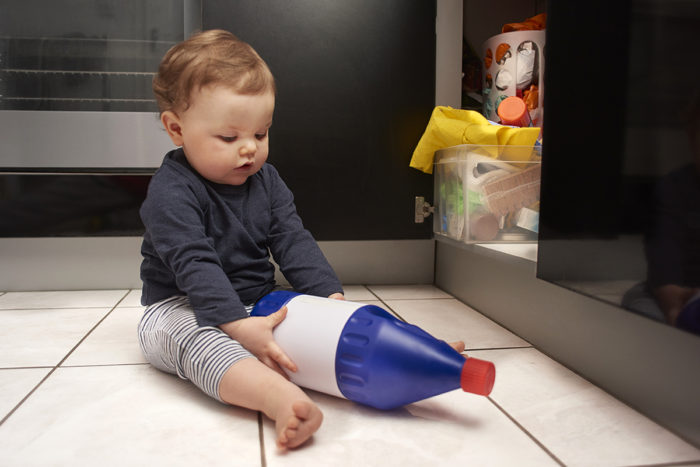Review on toxic alcohols provides guidelines on how to treat poisonings
Aim is to help emergency physicians identify, treat patients suspected of ingesting such poisons
 Getty Images
Getty ImagesChildren can get into toxic liquids accidentally. For them, the hazard often happens when an adult has transferred toxic fluids into an unmarked container. A few teaspoons could be toxic for a toddler.
Poisonings from toxic alcohols can occur when adults or children accidentally or intentionally drink household products such as windshield wiper fluid, antifreeze or rubbing alcohol. Such poisonings can cause organ damage and death — but emergency room physicians don’t always know how to make these diagnoses.
A review of studies of such poisonings recently was published in The New England Journal of Medicine. It discusses the mechanisms of toxicity, methods available for diagnosis and current recommendations for treatment. The article — by Michael Mullins, MD, associate professor of emergency medicine at Washington University School of Medicine in St. Louis, and Jeffrey Kraut, MD, a professor of medicine at the David Geffen School of Medicine at UCLA — updates clinical knowledge in this area and provides guidelines on how physicians should treat patients suspected of ingesting toxic alcohols.
How often do emergency medicine physicians see patients who may have ingested toxic alcohols?
We know that 10,000 recorded cases occur in the United States each year, according to data from the U.S. Poison Control Center. That number probably is an underestimate, however; either the poisoning goes unrecognized or the treating physician feels comfortable managing the case and doesn’t call the poison center. That number probably reflects half of the actual cases.
Who makes up this population?
Children are about 10 percent of that group. They get into these liquids accidentally. For them, the hazard often happens when an adult has transferred the fluid into an unmarked container that otherwise would look like a water bottle or a cup. The child sees a bright-colored liquid that looks like Gatorade or some other drink and takes a sip. A few teaspoons would be toxic for a toddler.
The larger percentage of people in this group are adults who either take automotive products for suicidal intent or drink them to become drunk. I have had a few patients who were alcoholics who believed they could cheaply mix antifreeze with regular alcohol to prolong the effects of alcohol in the bloodstream.
What does this review tell us about methods of diagnosing toxic alcohol poisonings?
It tells us that the available methods for diagnosis are imperfect and that signs and symptoms of toxic alcohol poisoning often mimic symptoms of infection, stomach flu or intoxication. Diagnoses tend to rely on the tests that we have available, which are the basic chemistry tests we do on people coming to the emergency department. Toxic alcohols require a specialized laboratory. For antifreeze in particular, most hospital labs can’t test for it. Ours is one of only a handful of Missouri hospitals that can test for antifreeze in the blood. I would tell people to bring someone to a larger facility if they suspect a person has ingested a toxic alcohol.
How do you hope this review changes care for alcohol poisonings?
I hope this improves the understanding of physicians and other care providers of the risks and the difficulties in diagnosing toxic alcohol poisoning; emphasizes the urgency of treatment for people who have suspected or confirmed toxic alcohol poisoning; and highlights some of the difficulties of diagnosis in terms of getting specific treatment. Small- and medium-sized hospitals need better and simpler diagnostic methods, and we hope this paper calls attention to further research to develop tools that can be used in these facilities.







